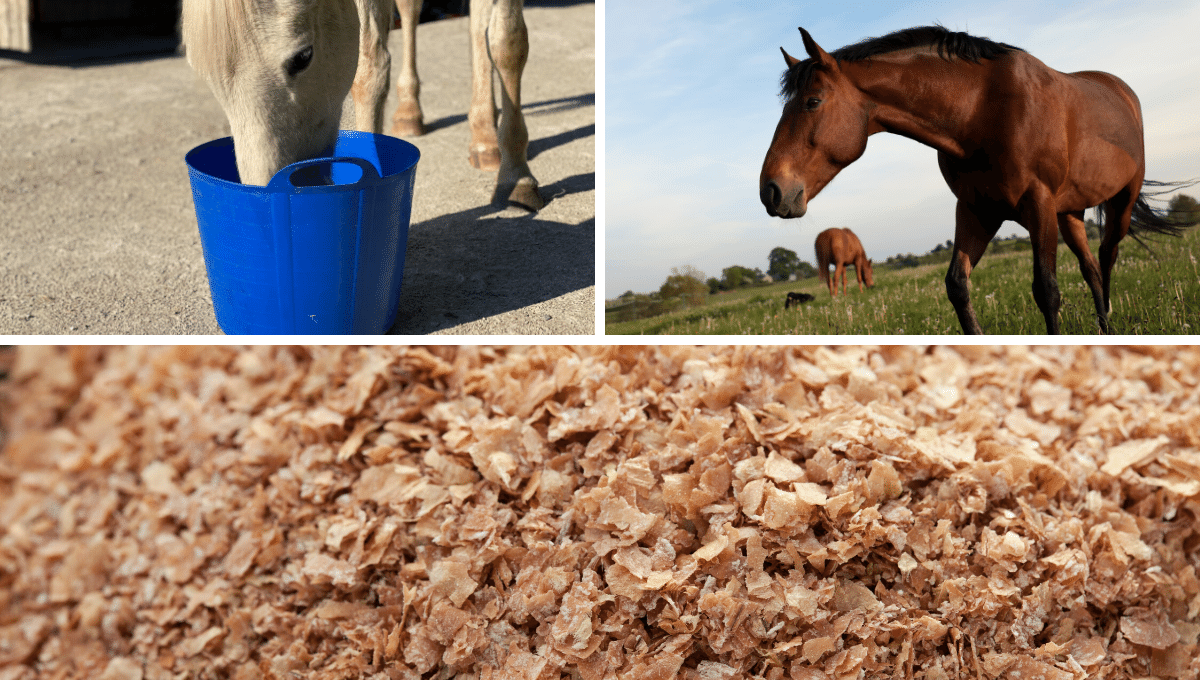Magnesium Oxide or Magnesium Chloride. Which is the best form of magnesium for horses?
There does appear to be better absorption of magnesium chloride compared to magnesium oxide but should you feed magnesium oxide or magnesium chloride? The answer is not clear-cut by any means.
Here we give you the science behind the reason we would rather feed a high-quality, low-iron, magnesium oxide to horses.
Magnesium supplements for horses
There has been a lot of research published on magnesium uptake across several species, this is a link to a publication regarding magnesium absorption, in particular, Table 3 on pages 5 and 6 is of interest.
The most cited publication is that by Firoz and Graber referring to a study in humans (reference 79 in the linked paper above) from which the 4% bio-available number comes that many refer to. However, in another study conducted by Ranhotra in rats (see the table below), it states there is no significant difference between magnesium oxide and chloride.
| Author | Study number | Type of Magnesium Supplement | Amount | Technique | Findings |
|---|---|---|---|---|---|
| Cook (1973), [76] | Rats (n=8 per group) | Carbonate, Chloride, Oxide, Phosphate Sulphate, Silicate | 17.7-19.9 mg/d for 2 weeks | Chemical Balance, Plasma Magnesium, Urinary Magnesium | Carbonate and chloride better absorbable than phosphate, sulphate, and silicate; oxide absorption in between the 2 groups |
| Ranhotra et al. (1976), [77] | Rats (n=8 per group) | Lactate, Citrate, Acetate, Sulphate, Oxide, Chloride, Phosphate, Carbonate | 19 mg/100 g in the diet for 4 weeks | Chemical balance | No significant difference in Magnesium absorption from various sources |
| Feillet-Coudray et al. (2003), [74] | Rats (n=8 per group) | Sulphate rich water, Bicarbonate rich water, Magnesium Chloride | 11-14 mg/d for 4 weeks | Stable Isotope Techniques | No significant difference between 3 groups; however, only 1/3 of Magnesium coming from Magnesium supplements |
| Dolinska & Ryszka (2004), [90] | Rat small intestinal segments | Gluconate, Fumarate, Chloride | 1, 5 and 10 mmol | Plasma area under curve | At 1 and 5 mmol gluconate most positive effects, at 10 mmol fumarate |
Clearly, horses are neither human nor rat and to date, no equine studies have been carried out on whether magnesium oxide or magnesium chloride is best for horses.
Given the digestive system of a horse and the influence of what a horse eats on absorption, pathways are significantly different from both rats and humans it seems reasonable, in our opinion, to not over-extrapolate/interpret the available published data.
What we do know is that both magnesium oxide and magnesium chloride will be absorbed by horses, we just don’t know the relative absorption of one compared to the other.
Trace contaminants, an antagonistic influence on horses
We also know that trace contaminants, in particular iron, can exert significant influence on a horse’s ability to absorb key minerals because of the antagonistic effect iron has.
It is well known that minimising unwanted absorption of iron is critical to ensure good mineral uptake and maintain good horse health.
With this in mind let’s look at both magnesium oxide and magnesium chloride in a bit more detail;
Magnesium chloride is extremely hygroscopic meaning that it readily absorbs water molecules. Commercial magnesium chloride is actually the hexahydrate which means there are six water molecules for every magnesium, its chemical formula is (MgCl2.6H2O). To fully appreciate the implications of this you need to work out the comparative molecular weights:
Unlike magnesium chloride, magnesium oxide is not hygroscopic and forms a stable compound all on its own, its chemical formula is (MgO).
Magnesium oxide has a molecular weight of 40 which is made up of one magnesium (atomic weight of 24) and one oxygen (atomic weight of 16). Looking at this another way the elemental composition of magnesium in magnesium oxide is 24/40 = 60%. This means for every 100g of magnesium oxide fed there will be 60g of elemental magnesium.

Magnesium Oxide, less weight for the same elemental value
Comparing this to magnesium chloride hexahydrate (MgCl2.6H2O) this has a molecular weight of 203 which is made up of one magnesium (atomic weight of 24), two chlorines each with an atomic weight of 35.5 (Cl2 = 2 x 35.5 = 71) and six water molecules each with a molecular weight of 18 (6H2O = 6 x 18 = 108).
So the elemental composition of magnesium in magnesium chloride hexahydrate is 24/203 = 11.8%. This means for every 100g of magnesium chloride fed there will be only 11.8g of elemental magnesium.
If we ignore bioavailability for a moment, you would have to feed just over five times the amount of magnesium chloride hexahydrate to provide the same amount of elemental magnesium as that in magnesium oxide.
Alternatively, if we say, for argument’s sake, that the bioavailability of magnesium chloride in horses is 500% higher than magnesium oxide we would end up feeding the same weight of magnesium chloride hexahydrate as magnesium oxide and get the same amount of magnesium absorbed.
Forageplus recommends feeding high-quality magnesium
Commercial animal feed grade magnesium oxide contains high levels of iron (10,000ppm or more) so we at Forageplus have gone to great effort to source pharmaceutical grade magnesium oxide that has the lowest iron content available (30ppm or much less).
All of our horse feed balancers also contain this high-quality magnesium. This is the key reason why we recommend feeding magnesium oxide and stock this magnesium oxide and not magnesium chloride.
Another reason is that magnesium oxide has the highest elemental magnesium composition out of all the magnesium salts and through our sourcing has very, very low iron levels. Magnesium chloride also contains trace iron and is far more unpalatable than magnesium oxide.
Without solid data on the bio-availability in horses, we feel most horse owners should supplement magnesium based on an elemental level. This would mean feeding five times the weight of magnesium chloride compared to magnesium oxide. It is our opinion that this could lead to unwanted levels of iron being unwittingly introduced into the horse’s diet and is likely to be unpalatable at the high amounts needed to cover the elemental value.
In a nutshell, our top tip given the lack of hard data is that it’s best to air on the side of caution and as such we recommend that the safest option for magnesium supplementation is to use daily magnesium oxide with low iron content.
If you really wish to feed magnesium chloride, ensure you feed a human-grade quality and make sure you understand the elemental amount being fed. This means calculating the amount needed to cover the elemental magnesium level your horse needs to balance to the forage he or she is eating.
Please see this article to understand about the purity of magnesium oxide and the importance in obtaining a technical specification to ensure low heavy metal contamination in the type you feed to your horse.






